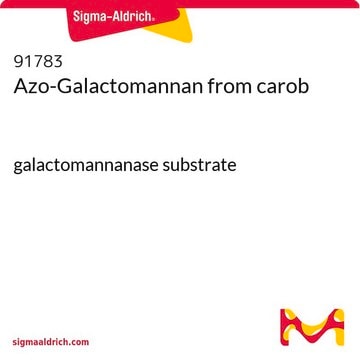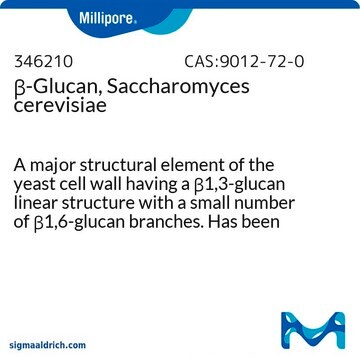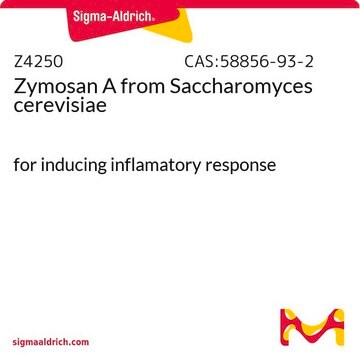The molecular weight of this product has not been determined. However, various sources have reported a base molecular weight of 504.4 g/mol. Historical information indicates a molecular weight range of 72-92 kDa. This material is a highly branched polysaccharide made up of arabinose and galactose units in a ratio of 1:6.
48230
D-Galacto-D-mannan from Ceratonia siliqua
~95% (HPLC)
Synonym(s):
Carob galactomannan
About This Item
Recommended Products
biological source
Ceratonia siliqua
Quality Level
Assay
~95% (HPLC)
form
powder
mol wt
Mr ~200000
loss
≤5% loss on drying
color
white
solubility
1 g/L at 20 °C
cation traces
Ca: ≤1000 mg/kg
Cd: ≤5 mg/kg
Co: ≤5 mg/kg
Cr: ≤5 mg/kg
Cu: ≤5 mg/kg
Fe: ≤100 mg/kg
K: ≤1000 mg/kg
Li: ≤5 mg/kg
Mg: ≤200 mg/kg
Mn: ≤5 mg/kg
Na: ≤1000 mg/kg
Ni: ≤50 mg/kg
Pb: ≤5 mg/kg
Sr: ≤10 mg/kg
Ti: ≤5 mg/kg
Zn: ≤50 mg/kg
storage temp.
room temp
Looking for similar products? Visit Product Comparison Guide
Application
Other Notes
Storage Class Code
11 - Combustible Solids
WGK
WGK 3
Flash Point(F)
Not applicable
Flash Point(C)
Not applicable
Personal Protective Equipment
Choose from one of the most recent versions:
Already Own This Product?
Find documentation for the products that you have recently purchased in the Document Library.
Customers Also Viewed
-
Molecular weight of the D-Galacto-D-Mannan
1 answer-
Helpful?
-
Active Filters
Our team of scientists has experience in all areas of research including Life Science, Material Science, Chemical Synthesis, Chromatography, Analytical and many others.
Contact Technical Service










